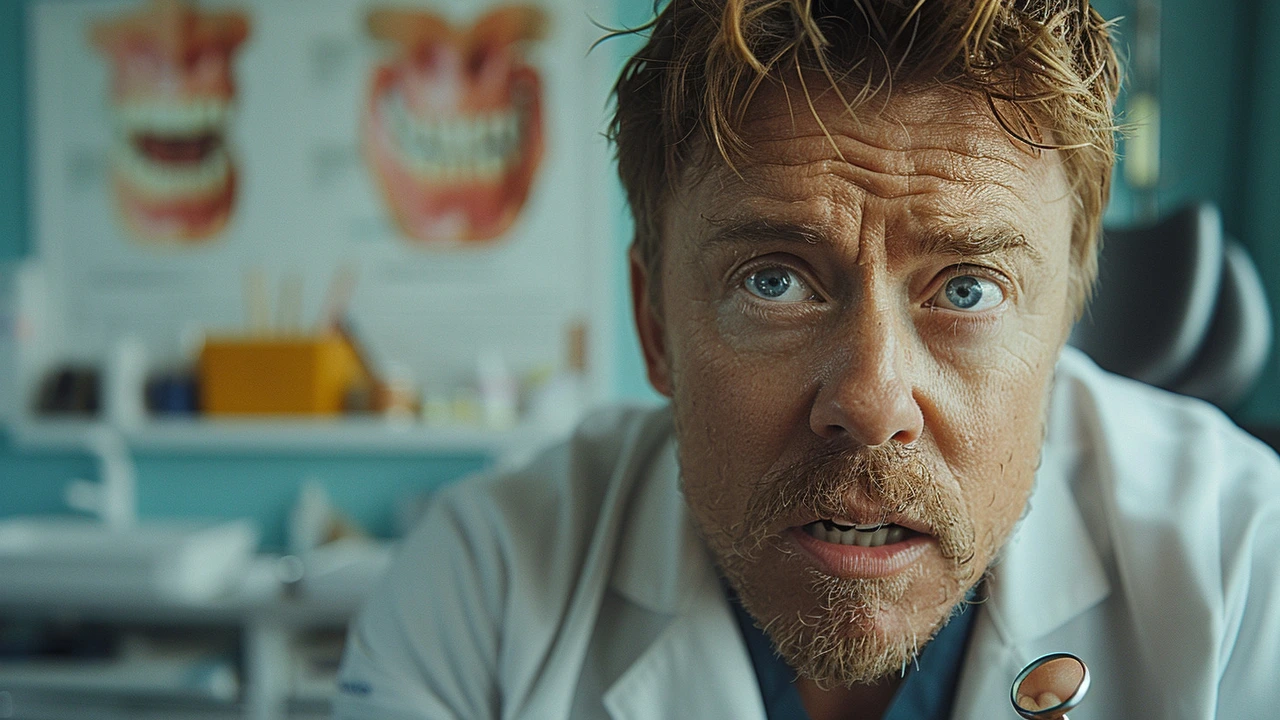
Symptoms and Early Warning Signs of Cracked Tooth Enamel
At first glance, our teeth might appear invincible, but even the mightiest warriors have their vulnerabilities. Cracked tooth enamel is a formidable opponent in the arena of dental health, often sneaking up silently and causing significant damage if left unchecked. The early warning signs can be subtle, including sudden pain when your tooth is exposed to temperature extremes or pressure during chewing. You might also notice discomfort that comes and goes unpredictably or a sharp shard-like feeling upon your tongue. In some cases, visible lines or cracks might appear, though these are not always obvious without the expert eye of a dentist.
Sensitivity to sweet, hot, or cold foods and drinks is another hallmark symptom, often mistaken for general tooth sensitivity. Unlike the broad discomfort that typically characterizes sensitivity, cracked tooth enamel brings about a more localized, acute pain. It's like the difference between the ambient hum in a crowded room and the piercing sound of a glass shattering — both are signals, but one is decidedly more urgent.
Diagnosis and Professional Dental Care
Diagnosing a cracked tooth isn't always a straightforward process. Dental x-rays often struggle to reveal the finer cracks, requiring a dentist's keen eye and specialized tools like a dental explorer or dye. During an examination, you might be asked to bite down on something or describe when and where you experience pain, helping to pinpoint the affected tooth.
In terms of treatment, the strategy will vary based on the severity and location of the crack. Minor cracks may only need a simple polish to smooth out rough edges, while more serious cracks could necessitate dental crowns, root canals, or even tooth extraction in extreme cases. The goal is always to preserve as much of the natural tooth as possible. For those diagnosed, a common sentiment shared among patients, as echoed by Dr. Smith in a recent dental journal,
'The realization that early detection and treatment could have saved them extensive pain and expense is a tough pill to swallow.'
Prevention and Daily Care
Maintenance of oral hygiene is your first line of defense against cracked tooth enamel. Regular brushing with a fluoride toothpaste, flossing, and using an antiseptic mouthwash can keep your teeth strong. Another critical aspect is diet — consuming foods rich in calcium, phosphorus, and vitamin D supports enamel health. Conversely, sugary and acidic foods can erode enamel over time, increasing the risk of cracks.
Beyond hygiene, being mindful of not using your teeth as tools to open packages or chew on hard objects like ice can prevent physical damage. Additionally, if you’re prone to bruxism (teeth grinding), wearing a mouthguard at night can protect your teeth from the excessive force that could cause cracking.
Advanced Treatments and Innovations
The dental field is constantly evolving, and treatments for cracked tooth enamel are no exception. Modern dentistry now offers more advanced materials for crowns and fillings that not only mimic the natural appearance of teeth but also provide durability against further cracking. One of the promising areas of research is in the development of biomaterials that can potentially repair and regenerate tooth enamel, a feat that was once considered impossible.
Photobiomodulation, a treatment using low-level laser therapy, has also shown potential in reducing pain and accelerating the healing process in damaged tissues. Though still in the early stages of adoption, these advancements offer a glimpse into a future where dental health challenges like cracked tooth enamel can be addressed more effectively and less invasively.
Write a comment
More Articles

How long does a tooth take to come in?
Hi all! Today, I'm going to talk about something really fascinating - the time it takes for a tooth to come in. More specifically, we'll be looking at the timeline of tooth emergence, both in babies and in adults. We'll delve into the differences between primary and permanent teeth, and answer some of your top questions. So, whether you're a curious adult or a parent wondering when your kid's next tooth is going to pop out, stick around!

Dental tartar under the gums: what is its impact on our teeth?
Hey there, it's me again, your friendly dental enthusiast here to talk about something quite crucial, dental tartar under our gums. Most of us have heard of it, but few truly understand the impact it can have on our teeth. I'll be diving deep into what exactly it is, and its potential consequences on your pearly whites. Join me, as we navigate through the nitty-gritty of under-gum tartar and its effect on oral health. Don't miss out on this enlightening journey to maintain our dazzling smiles!

Tracing Back the Origins: Who Discovered the First Tooth Fossil?
Delve into the fascinating journey of how the first tooth fossil was discovered, shedding light on the field of dental archaeology and the crucial insights teeth provide about our ancestors. This article explores the initial find and its implications for understanding early humans, the context of prehistoric dentistry, and the evolution of dental practices throughout history. Uncover the significance of these small but mighty pieces of evidence that hold the secrets to our past.


